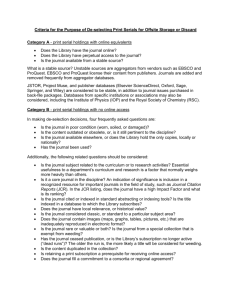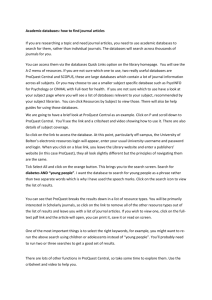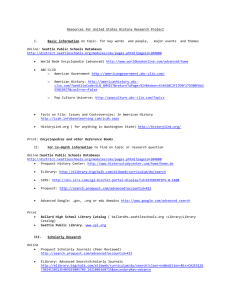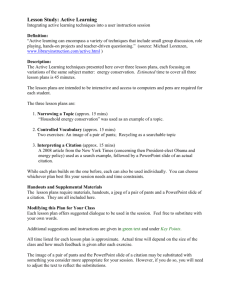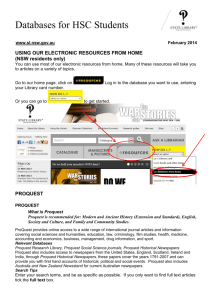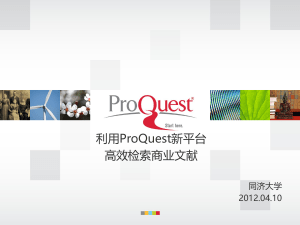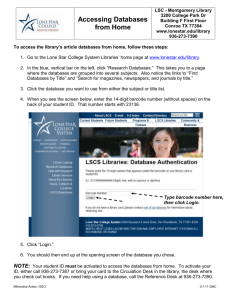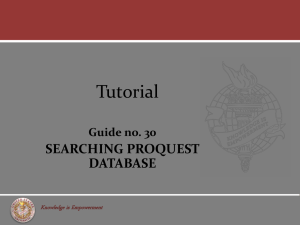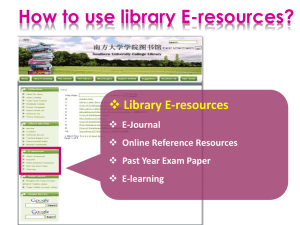quiz6-journals-citations-16-09
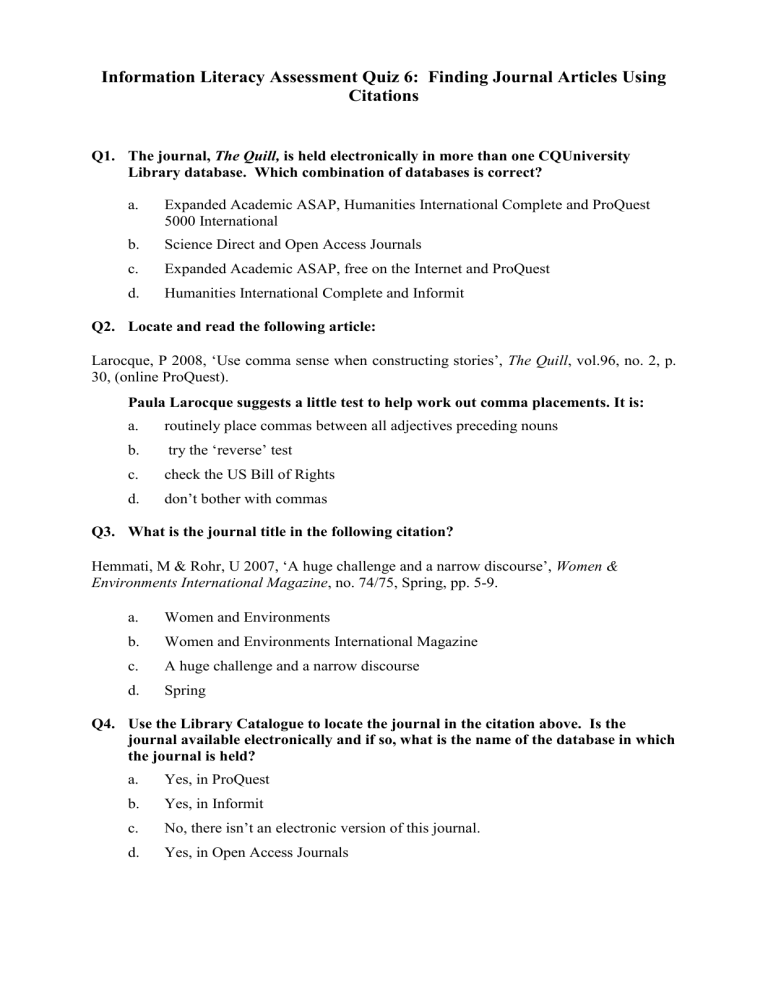
Information Literacy Assessment Quiz 6: Finding Journal Articles Using
Citations
Q1. The journal, The Quill, is held electronically in more than one CQUniversity
Library database. Which combination of databases is correct? a.
Expanded Academic ASAP, Humanities International Complete and ProQuest
5000 International b.
Science Direct and Open Access Journals c.
Expanded Academic ASAP, free on the Internet and ProQuest d.
Humanities International Complete and Informit
Q2. Locate and read the following article:
Larocque, P 2008, ‘Use comma sense when constructing stories’, The Quill , vol.96, no. 2, p.
30, (online ProQuest).
Paula Larocque suggests a little test to help work out comma placements. It is: a.
routinely place commas between all adjectives preceding nouns b.
try the ‘reverse’ test c.
check the US Bill of Rights d.
don’t bother with commas
Q3. What is the journal title in the following citation?
Hemmati, M & Rohr, U 2007, ‘A huge challenge and a narrow discourse’,
Women &
Environments International Magazine , no. 74/75, Spring, pp. 5-9. a.
Women and Environments b.
Women and Environments International Magazine c.
A huge challenge and a narrow discourse d.
Spring
Q4. Use the Library Catalogue to locate the journal in the citation above. Is the journal available electronically and if so, what is the name of the database in which the journal is held? a.
Yes, in ProQuest b.
Yes, in Informit c.
No, there isn’t an electronic version of this journal. d.
Yes, in Open Access Journals
Q5. There are various types of journals from which to source information. The purpose of a trade journal is to: a.
cover practical information related to a field or industry b.
entertain and inform without providing in-depth analysis c.
publish articles related to a single academic discipline or subdiscipline d.
encompass current events in politics, sport, leisure, religion and business
____________________________________________________________________________
Q1 .
Answer Correct:
Feedback: Well done. You have correctly identified which of the Library’s databases holds the journal, The Quill.
Q1.
Answer Incorrect:
Feedback: The answer you selected was not correct. You need to re-read IL Guide 6 to find out how you can determine if the Library subscribes to a particular journal and if so, which databases hold the journal.
________________________________________________________________
Q2.
Answer Correct:
Feedback: Well done. You have revealed that you know how to find a journal article in a database and have read the article sufficiently well to select the correct answer.
Q2.
Answer Incorrect:
Feedback: The answer you selected was not correct. It is suggested that you revisit IL Guide
6 to find out how to locate the journal article if you have been unable to do so. You will then need to carefully read the article to find out which test Paula Larocque suggests should be used to work out comma placements.
___________________________________________________________________________
Q3.
Answer Correct:
Feedback: Well done. Your answer reveals that you were able to correctly identify the journal title in the given citation.
Q3.
Answer Incorrect:
Feedback: The answer you selected was not correct. You are advised to revisit IL Guide 1 and IL Guide 6 to find out how to correctly identify the journal title in a given citation.
___________________________________________________________________________
Q4.
Answer Correct:
Feedback: Well done. You have correctly identified which of the Library’s databases holds the journal, Women and Environments International Magazine.
Q4.
Answer Incorrect:
Feedback: The answer you selected was not correct. You need to re-read IL Guide 6 to find out how you can determine if the Library subscribes to a particular journal and if so, which databases hold the journal.
__________________________________________________________________________
Q5.
Answer Correct:
Feedback: Well done. You have selected the correct answer thereby revealing an understanding of the purpose of a trade journal.
Q5.
Answer Incorrect:
Feedback: You have not selected the correct answer. It is suggested that you revisit IL
Guide 6 to find out the purpose of a trade journal.
